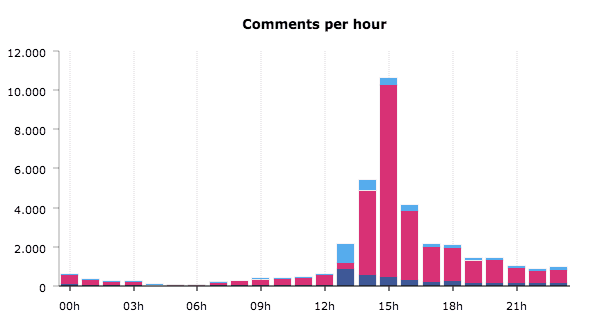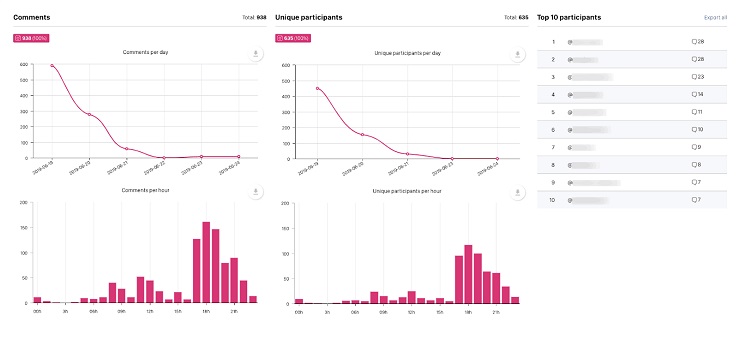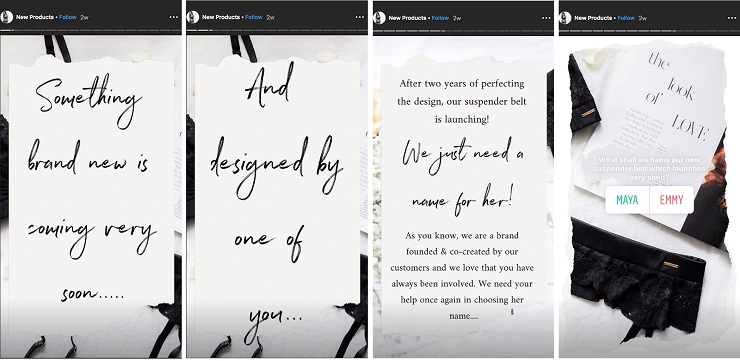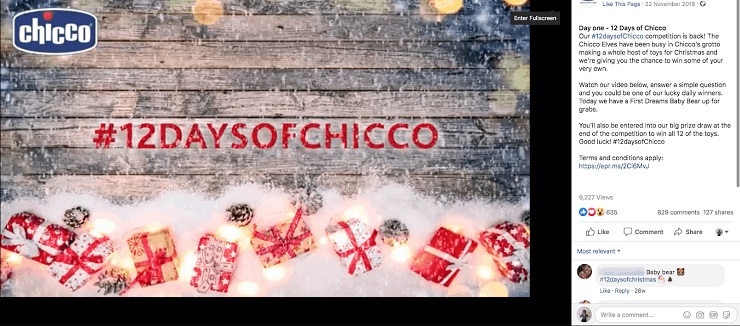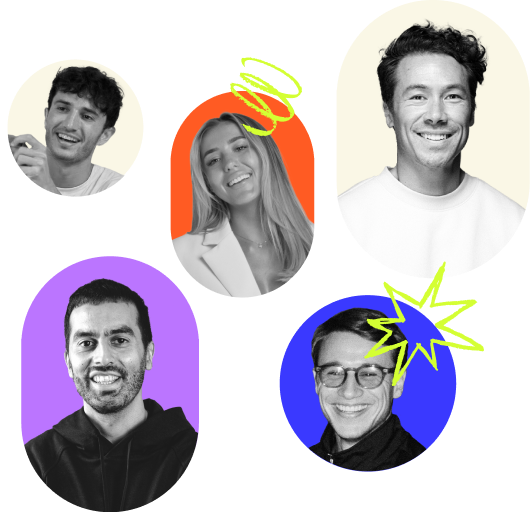This article is for every marketer who ever ran a giveaway, and then watched that intoxicating surge of engagement fizzle out and fade away. It’s also for anyone who is about to run a giveaway and desperately wants to avoid that same fate.
Pretty much every brand runs giveaways these days—they are killer ways to rapidly expand your audience and gain visibility—but most of them are wasting 90% of the benefit. That 90% lies in what you do when it’s over.
When done right, giveaways can build genuine relationships with your audience, augment your content strategy, and boost your brand’s reputation. All it takes is a little advance preparation and dedicated follow-through.
Here are some online giveaway tips to help you extract marketing gold from your campaigns.
EXCLUSIVE FREE TRAINING: Successful Founders Teach You How to Start and Grow an Online Business
Diagnosing the Problem
So just where do giveaways go wrong? In my experience, there are two big mistakes that social media marketers make with these promotions:
- They treat the giveaway as a one-off, isolated event.
- They don’t leverage statistics and feedback from the giveaway.
Right away, they lose out by ignoring the potential power and reach of social media promotions. They treat the giveaway like it’s irrelevant to their wider content strategy.
(Or worse still, they have no strategy at all. But I’m sure you’re better than that.)
But guess what? If you’re planning your content and making proper use of analytics, then every post on your social media profile becomes part of the big picture. Your social media giveaway isn’t 100% of the strategy. But it does have an impact on 100% of the strategy.
Giveaways produce way more actionable data and insights than you might expect. So today, we’re going to take a look at how to set up your giveaway for maximum feedback, process that data, and then use it to inform and reform your brand presence on social media.
1. Set Your Giveaway Up for Success
I don’t want to spend too much time here talking about how to design a giveaway. You probably already know the basics and there are plenty of guides out there (like this one I wrote).
But there are a couple of points that are relevant to this specific goal. Remember, we’re trying to get more bang for your buck. How can you maximize interactions from the get-go?
First tip: Pick an audience. Lots of brands run giveaways indiscriminately. They’ll offer a universally popular prize, such as a gift card. But you’ll get more valuable information if you find a niche audience. Choose the social network where your target market hangs out, and offer a prize that appeals to that particular group of people.
A delightfully niche example from an oil brand. The contest mechanic, prize, and even the photo are all carefully chosen to appeal to their target audience: American homeowners and DIY enthusiasts.
Next, make sure you ask the right questions in your promotion. Most social media giveaways are built on questions and answers. You publish a question in the giveaway post, and they answer in the comments.
Unfortunately, most brands waste this opportunity by asking generic questions: “Comment ‘I want it’” or “Comment what you had for breakfast today.”
Asking people to comment with the coconut emoji is cute…but it’s also useless in strategic terms.
Why not ask a question that will actually be useful? Ask people to tell you their favorite products, describe their shopping habits, or give feedback on your brand. Now your giveaway doubles as market research.
In the above Twitter giveaway from Ribble Cycles, followers can win tickets to a cycling show if they share photos and feedback about their favorite Ribble bike. That user-generated content can be recycled by the brand in social media posts, or to inform product design.
Finally, don’t waste people’s time. Social media likes are a vanity metric, and we all know it. They don’t convey any real information or relationship with your viewers. So why waste time and goodwill by begging for likes?
Similarly, although asking for followers is a popular move, those new subscribers will melt away when the giveaway ends. (And please note: on some social networks, such as Facebook, asking for followers will get you banned.)
Instead, focus on offering a fun, rewarding contest that starts a real conversation in the comments. The other, lesser forms of engagement will happen naturally.
EXCLUSIVE FREE TRAINING: Successful Founders Teach You How to Start and Grow an Online Business
2. Leverage Analytics From Your Giveaway
OK, so let’s assume that you followed my advice. You’ve just finished up a giveaway that was flawlessly on target, gained lots of interesting comments, and engaged your users in meaningful ways.
Now what?
It’s time for the analysis. First off, here’s a quick list of the data you can expect to get from a standard social media giveaway:
- usernames and comments from participants
- platforms that yield the most participation
- peak participation times and dates
- your most active/engaged followers
- comparison of peak times and participation by platform (if you run a giveaway across multiple social networks)
Note that most of this info is only relevant to the social network where you ran the giveaway. That’s fine. This isn’t about immediate conversions. It’s about building a long-term social strategy.
For example, you can use that data on participation times to figure out when your audience is most active. Every audience is different, and the pattern of their social media use might surprise you.
If you run a giveaway across networks, it’s especially useful to compare your audiences. You might discover that your Instagram followers are more active than those on Twitter or Facebook:
Screenshot from the Statistics dashboard of an Easypromos giveaway. Pie charts showing comments and unique participants from Facebook, Twitter and Instagram in a single multi-network giveaway.
You can compare the number of comments against unique users, too. So in the example above, it’s clear that not only does the brand have more followers on Instagram, but their Instagram followers are more active than fans on other networks.
Let’s take another example. You might notice that, while followers across networks are more active in the afternoon, people start logging into Twitter and Instagram first. Facebook engagement starts punctually at 1 p.m. Instagram usage peaks a little later. So now you know when to grab your followers’ attention.
Bar chart showing comments per hour during a multi-network giveaway. Above all, Instagram comments peak between 1 p.m. and 7 p.m. However, Facebook comments reach their peak much earlier in the afternoon, from 1 p.m. and 4 p.m.
It’s worth noting that these stats may look different from the native analytics on your social media profiles. Why? Because these are statistics for a very specific type of interaction: meaningful, motivated comments.
If you do see differences between your giveaway statistics and more general social statistics, interrogate those differences. What are they telling you about how your audience behaves? What makes your giveaway so different from day-to-day Facebook posts? Is it the prize motivating users, or the fact that you opened up a real conversation in the comments?
Last of all, your giveaway stats will include a list of the most active followers. This is a jumping-off point for further research.
In some cases, it’s a warning that you’ve picked up a spammy user or a giveaway account. But if you check out the top 10 profiles and find that those users are genuine, then the names on that list are leads on potential micro-influencers and brand ambassadors.
Collection of line charts showing comments and unique participants by date, bar charts showing comments and unique participants by hour, and a list of the top 10 most active participants with the number of comments made by each one.
3. Make Giveaways Part of Your Content Strategy
So, as we’ve seen, the data from a giveaway can be valuable feedback for your social media strategy. But what about the giveaway itself?
This is the second point that I want to hammer home: your social media giveaway is not a one-and-done kind of deal. Before, during, and after the campaign, your giveaway is a source of rich and varied content to share online.
Let’s look at how it works.
Before and During the Giveaway
The life cycle of an individual giveaway is much more than a single post. You can start by teasing the giveaway, then announcing it, then publishing a giveaway post.
Once comments and reactions start rolling in, you should be ready to engage with your followers. Reply to their comments! Get involved in the conversation! You should already have social media monitoring and listening set up, so use those tools to your advantage. If you’re anticipating lots of entries, consider setting up automatic replies to people who DM with common questions about the giveaway.
You can also keep creating more posts. Show a video where you unbox the prize, or post a photo carousel with sneak peeks of the different items in a prize bundle.
(This kind of content works especially well in Stories. Although there’s currently no way to run a giveaway from Story replies, due to restrictions in social network APIs, you can certainly leverage Stories to support your giveaway within the comments.)
Finally, you can use the whole winner selection process as a source of content. Post a Story with a live countdown. Get people hyped for the final prize draw. Announce the winner in style, for example, with an instant animated video.
After the Giveaway
Most giveaways on our platform run from 24 hours to a week. So let’s say that’s at least a week of solid content, directly related to the sweepstakes. But it doesn’t end there.
Use the insights you gained from user comments and posts to plan more content. For example, if you had a ton of participants asking for more info on a product, then make sure you showcase that same product in the next few weeks.
Some brands even use the feedback from giveaways to inform their product design. So if you do release a new product based on user comments, make sure you tell your followers all about it!
In this Instagram Story series from lingerie brand Attollo, they announce a new product designed by customers. As a final step, they run a poll asking customers to choose the new product’s name.
Creating a Content Program
You should also think about making giveaways a regular event in your content calendar. That doesn’t necessarily mean you have to run frequent giveaways. It just means creating a recurring event you can hype up to your followers.
For example, some brands run a weekly quiz, or a monthly prize drawing.
This brand for breastfeeding mothers has a regular “Thursday Trivia” giveaway. Their posts and prizes are targeted for an extremely specific audience, and the strategy works brilliantly.
Other brands wait for annual events to launch their giveaways.
Baby brand Chicco has turned their “12 Days of Christmas” gifting campaign into an annual tradition, with interactive videos and puzzles for parents and kids to play together.
However, if you do decide to run regular giveaways, don’t lose sight of your marketing objectives. Never run a giveaway “just because.” Run giveaways because you want to reach a specific audience, collect specific data, or build engagement on a specific social network.
EXCLUSIVE FREE TRAINING: Successful Founders Teach You How to Start and Grow an Online Business
What’s the Key Takeaway?
We started by pointing out two common mistakes people make about giveaways: not following through on the data, and not following through on the strategy. Hopefully, you now feel confident about using both to maximum effect.
Giveaways aren’t just a blunt instrument for getting more likes and follows. Use them with surgical precision to learn more about the different segments of your audience, and tailor your content strategy to them.
Every brand and audience is different, so every giveaway strategy will be different, too. I’d love to hear about your experience, and how you get the most from social media campaigns. Join the conversation in the comments!





